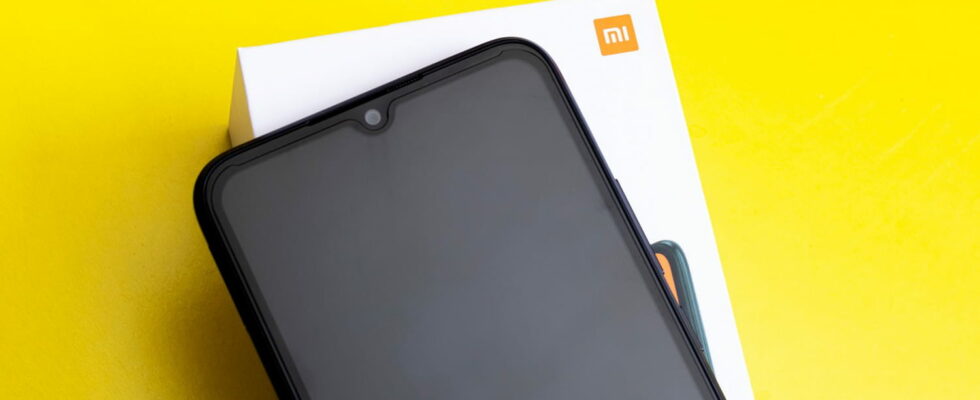Xiaomi has just added new models to the list of its smartphones that will no longer receive software updates. And which will therefore be exposed to security issues. Here are the models concerned.
All smartphone manufacturers provide updates to their devices for several years. There are two types: major operating system (OS) updates, which bring new features and interface changes, and security updates, which correct system flaws to protect it against viruses and other malware. However, after a certain time – which depends on the policy of each manufacturer – the manufacturer no longer provides support for the device, which means that some applications become incompatible and security flaws are no longer corrected, which exposes risks. Xiaomi is no exception and regularly shares with its users the list of smartphones – under the name EOS list (End of Support) – who no longer receive MIUI, Android or security updates.
Which devices are no longer updated?
Xiaomi’s update policy depends on the smartphone model. The Chinese manufacturer has committed to providing four years of security updates and three years of major Android updates, but this only applies to smartphones starting with the Xiaomi 12 and 12 Pro. For other models, it’s less. The Redmi Note and Mi benefit from two to three major updates, while the other Redmis have to make do with one to two Android updates.
On August 27, 2024, new Xiaomi, Redmi, and Poco devices were added to the EOS list, including the Redmi Note 10 Pro and Pro Max, POCO F3, X2, X3, M3, and M3 Pro. Here are all the models sold on the market that are no longer supported by the Chinese manufacturer:
- Mi 1
- Mi 2
- Mi 2A
- Mi 3
- Mi 4
- Mi 4S
- My 4C
- Mi 5
- Mi 5S
- Mi 5S Plus
- My 5C
- Mi 5X
- Mi 6
- Mi 6X
- Mi 8
- Mi 8 Lite
- Mi 8 SE
- Mi 8 UD
- Mi 8 Pro
- Mi 8 Explore Edition
- Mi 9
- Mi 9 Lite
- Mi 9 Pro 5G
- Mi 9T Pro
- Mi 9 SE
- My CC 9
- My CC 9th
- Mi CC 9 Pro
- My Note
- Mi Note 2
- Mi Note 3
- Mi Note Pro
- MIX
- MIX 2
- My MAX
- My MAX 2
- My MAX 3
- My A1
- My A2
- Mi A2 Lite
- My A3
- My Pad
- Mi Pad 2
- Mi Pad 3
- Mi Pad 4
- Mi Pad 4 Plus
- MIX 2S
- My MIX 2S
- MIX 3
- My MIX 3
- My PLAY
- Mi Note 10
- Mi Note 10 Lite
- Mi 10 Pro
- My 10
- Mi 10 Ultra (CN)
- Redmi 1
- Redmi 1S
- Redmi 2
- Redmi 2A
- Redmi 3
- Redmi 3S
- Redmi 3X
- Redmi 4
- Redmi 4X
- Redmi 4A
- Redmi 5
- Redmi 5 Plus
- Redmi 5A
- Redmi Note 1
- Redmi Note 1S
- Redmi Note 2
- Redmi Note 2 Pro
- Redmi Note 3
- Redmi Note 4
- Redmi Note 4X
- Redmi Note 5
- Redmi Note 5A
- Redmi Note 5 Pro
- Redmi Pro
- Redmi 6
- Redmi 6 Pro
- Redmi 6A
- Redmi Note 6 Pro
- Redmi S2
- Redmi Y2
- Redmi Go
- Redmi Note 7
- Redmi Note 7S
- Redmi Note 7 Pro
- Redmi K20
- Redmi 7
- Redmi Y3
- Redmi K20 Pro
- Redmi 7A
- Redmi 8
- Redmi Note 8 Pro
- Redmi Note 8T
- Redmi 8A
- Redmi Note 8
- Redmi 8A Dual
- Redmi Note 8 (IN)
- Redmi Note 8
- Redmi K30
- Redmi K30 5G
- Redmi K30 5G Speed
- Redmi 10X
- Redmi 10X Pro
- Redmi Note 9
- Redmi 9
- Redmi 10X 4G
- Redmi 9A
- Redmi K30i 5G
- Redmi Note 9
- Redmi Note 9 Pro
- Redmi 9C
- Redmi 9T
- Redmi Note 10 Pro
- Redmi Note 10 Pro Max
- POCO F1
- POCO F2 Pro
- POCO F3
- POCO X2
- POXO X3
- POCO M3
- POCO M3 Pro 5G
If your smartphone is on this list, it is essential that you are aware of the risks associated with using a device that is no longer supported. However, it is possible that if a serious security flaw is detected, Xiaomi will decide to make an update even if the smartphones are no longer supported.
